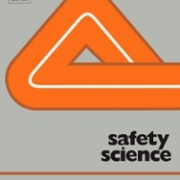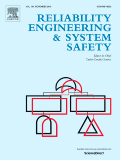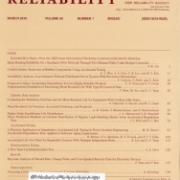Research paper accepted by Safety Science
In this paper, we apply a set of data-mining and sequential deep learning techniques to accident investigation reports published by the National Transportation Safety Board (NTSB) in support of the prognosis of adverse events. Our focus is on learning with text data that describes the sequences of events. NTSB creates post-hoc investigation reports which contain raw text narratives of their investigation and their corresponding concise event sequences. Classification models are developed for passenger air carriers, that take either an observed sequence of events or the corresponding raw text narrative as input and make predictions regarding whether an accident or an incident is the likely outcome, whether the aircraft would be damaged or not and whether any fatalities are likely or not. The classification models are developed using Word Embedding and the Long Short-term Memory (LSTM) neural network. The proposed methodology is implemented in two steps: (i) transform the NTSB data extracts into labeled dataset for building supervised machine learning models; and (ii) develop deep learning (DL) models for performing prognosis of adverse events like accidents, aircraft damage or fatalities. We also develop a prototype for an interactive query interface for end-users to test various scenarios including complete or partial event sequences or narratives and get predictions regarding the adverse events. The development of sequential deep learning models facilitates safety professionals in auditing, reviewing, and analyzing accident investigation reports, performing what-if scenario analyses to quantify the contributions of various hazardous events to the occurrence of aviation accidents/incidents.
Research paper accepted by Reliability Engineering and Systems Safety
Safety assurance is of paramount importance in the air transportation system. In this paper, we analyze the historical passenger airline accidents that happened from 1982 to 2006 as reported in the National Transportation Safety Board (NTSB) aviation accident database. A four-step procedure is formulated to construct a Bayesian network to capture the causal relationships embedded in the sequences of these accidents. First of all, with respect to each accident, a graphical representation is developed to facilitate the visualization of the escalation of initiating events into aviation accidents in the system. Next, we develop a Bayesian network representation of all the accidents by aggregating the accident-wise graphical representations together, where the causal and dependent relationships among a wide variety of contributory factors and outcomes in terms of aircraft damage and personnel injury are captured. In the Bayesian network, the prior probabilities are estimated based on the accident occurrence times and the aircraft departure data from the Bureau of Transportation Statistics (BTS). To estimate the conditional probabilities in the Bayesian network, we develop a monotonically increasing function, whose parameters are calibrated using the probability information on single events in the available data. Finally, we develop a computer program to automate the generation of the Bayesian network in compliance with the XML format used in the commercial GeNIe modeler. The constructed Bayesian network is then fed into GeNIe modeler for accident analysis. The mapping of the NTSB data to a Bayesian network facilitates both forward propagation and backward inference in probabilistic analysis, thereby supporting accident investigations and risk analysis. Several accident cases are used to demonstrate the developed approach.
Research paper accepted by IEEE Transactions on Reliability
Resilience is an important capability for many complex systems to mitigate the impact of extreme events as well as timely restoration of system performance in the aftermath of a disruptive event. In this paper, we investigate a bi-level pre-disaster resilience-based design optimization approach for the configuration of logistics service centers. In the bi-level program, the upper-level model considers the impact of potential disruptive events, and characterizes system planners’ decision regarding possible service center configuration that consists of two decision variables: construction of service center at candidate sites and their specific capacities. The optimization in the upper-level model considers both the travel time of each customer from their origins to the service centers and the within-center service time including average waiting time in the queue and mean processing time. The lower-level model captures customers’ behavior in choosing the distribution center to fulfill their requests with the goal of minimizing the cumulative travel time for all the customers. The objective of the formulated bi-level program is to maximize the resilience of the service center configuration, thereby increasing the ability of the system to withstand unexpected events. To tackle this NP-hard optimization problem, an adaptive importance sampling approach – cross entropy-based method – is leveraged to generate samples that gradually concentrates all its mass in the proximity of the optimal solution in an iterative way. A numerical example is used to illustrate the procedures of the developed method and demonstrate the effectiveness of the proposed methodology.




